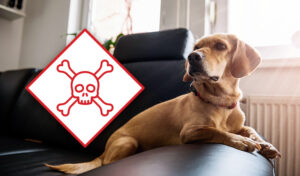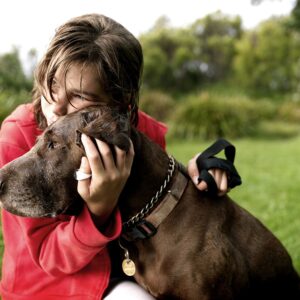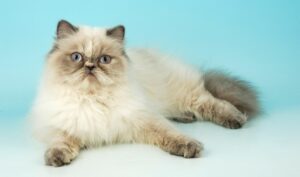Posts Tagged ‘cats’
What You Need To Know About Pet Poisons
 No pet owner wants to hurt their furry friend, but sometimes it is inevitable. Accidental poisonings can be prevented with simple switches in your home. One of the easiest ways to prevent an accidental poisoning is to watch what you plant in and around your house. While plants provide clean air for you home, they can also be really dangerous for pets based on what types of plants they are. Plants that aren’t toxic to humans like the hibiscus, those in the Easter lily family, mistletoe, and Dieffenbachia can cause medical problems in pets. Issues such as renal failure, irregular heartbeats, cardiac shock, or even death. Other examples of toxic plants include azalea, oleander, castor bean, sago palm, rhododendron, and Japanese yew. If you have these plants and cannot stand to give them up, put them up high in an unreachable location where your animal cannot chew or dig them up
No pet owner wants to hurt their furry friend, but sometimes it is inevitable. Accidental poisonings can be prevented with simple switches in your home. One of the easiest ways to prevent an accidental poisoning is to watch what you plant in and around your house. While plants provide clean air for you home, they can also be really dangerous for pets based on what types of plants they are. Plants that aren’t toxic to humans like the hibiscus, those in the Easter lily family, mistletoe, and Dieffenbachia can cause medical problems in pets. Issues such as renal failure, irregular heartbeats, cardiac shock, or even death. Other examples of toxic plants include azalea, oleander, castor bean, sago palm, rhododendron, and Japanese yew. If you have these plants and cannot stand to give them up, put them up high in an unreachable location where your animal cannot chew or dig them up
Your cat may love to snack on some grass outside, but this grass can be loaded up with deadly fertilizers and pesticides. Instead, you could make an indoor mini lawn for your cat. Mini lawns provide a safe, edible source of greenery. Special feline gardens are available commercially or you can start your own kitty garden using a bowl, soil, and grass seed. You could also grow catnip for you cat, but make sure to monitor how much your cat chews. While catnip is not generally toxic for cats, too much of the plant can overstimulate your cat’s central nervous system and cause a cat to injure themselves.
If you find that your pet was chewing on a plant, immediately remove the plant from their mouth and rinse their mouth gently with water. Identify which plant your pet was eating and call the poison center or your veterinarian. Be sure to watch for excessive or foamy salivation and changes in the skin around the mouth, eyes, or paws.
Another common cause of accidental poisonings is giving your pet something intended for a human. This could include people food, chemicals, or even medications. People often make the mistake of thinking that people food is ok for pets. Sometimes it is and sometimes it is not. Be sure to avoid milk, bones, chocolate, onions, rich and fatty foods, grapes, raisins, coffee, nicotine, and alcoholic beverages.
Like a child, one should poison-proof their house. Be sure to keep the cleaning products in a high, closed cabinet. There should be nothing below counter level because liquid drain cleaners, as well as tub and tile cleaners, can be lethal. Be sure to take precautions in the garage as well. Insecticides and auto care liquids need to be store high off of the ground to keep your pets from getting into them. Accidental chemical poisonings can even be made in giving medication. Avoid this by reading the label. For example, be sure to read the labels of flea control for your pets because the chemicals in dog flea agents are lethal for cats. Be sure to read the label directions and amounts carefully.
Some pet owners think that human medication will work for pets. This is incorrect. Never give your pet a human medication without consulting with your veterinarian. Even something as simple as aspirin can be lethal to your pet. Products such as acetaminophen and any aspirin product can cause stomach bleeding. Products like birth control and vitamins can also cause internal bleeding.
Cats tend to be attracted to unusual flavors. Be sure to keep things like the calamine lotion, diaper cream, sunblock, etc. away. These products contain an acid related to aspirin in them and will be toxic if ingested. Overall, small actions you take can help prevent the poisonings of your pets and keep them health. If you have any questions, feel free to contact Dr. Olsen at Olsen Veterinary Clinic at 618-656-5868.
Tips To Make It A Good Year For You And Your Pet
 The beginning of a year is a time for resolutions for most. People reflect on the past and think about what they can do differently in the upcoming year. This year, why don’t you include your pet in your resolutions?
The beginning of a year is a time for resolutions for most. People reflect on the past and think about what they can do differently in the upcoming year. This year, why don’t you include your pet in your resolutions?
To improve your dog’s life this year, why don’t you increase the amount of exercise they are getting? Dogs love activity, shown by the crazy reaction when a walk is mentioned. Take your dog on an extra-long walk, a run, or an extra outing. You could also look for a place where your dog can enjoy some activity off of their leash at a dog park! Mental exercise is just as important. Give your dog more mind-engaging activities with enrichment puzzles, new toys, visiting new places, and learning new skills and tricks. The easiest thing that could be done, however, is to spend more time completely focused on them. Dogs value this time, and it is especially important in multi-dog households. Improving your dog’s quality of life is a gift that keeps on giving: the more wonderful we make life for our dogs, the more ways they enhance our own.
To improve your cat’s life this year, there are simple things that can be done! To start, it is important to set up a balanced meal plan with clean drinking water. This includes not giving your cat too many treats. Similarly, be sure to visit your vet regularly and make sure that their vaccinations are up to date. While you are there, ask your vet to check their teeth. A cat’s teeth say a lot about their general health. Tartar, gingivitis, and plaque all contribute to bacterial growth and seeding to the rest of the body which can lead to further health issues. A resolution that involves you and your cat, you could help keep your pet’s teeth clean by brushing them with a toothpaste that is specifically formulated for cats. One could also provide toys for your cat. Toys are not just for fun. They provide exercise and prevent boredom. You can keep your cat entertained with toys, treats, interaction, trees, climbing, and excitement.
This new year, don’t forget to include your pet in your resolutions. There are many things you can do to help improve your pets’ quality of life while bettering yours too! As always, if you have any questions, feel free to contact Dr. Olsen at 618-656-5868.
The 4 Best Gifts for Your Dog, Dog Owners, and Dog Lovers
 As the holidays approach rapidly, that means it is time for gift giving! It can be easy to forget your pup in the chaos of the holidays, but here are 4 ideas so your pup doesn’t get forgotten.
As the holidays approach rapidly, that means it is time for gift giving! It can be easy to forget your pup in the chaos of the holidays, but here are 4 ideas so your pup doesn’t get forgotten.
A Matching Bandanna and Mask Set
This ensures that you and your pup hit the town in style and safely! There are many options available online at places such as Etsy that allow you to support small businesses and get a handmade gift for your favorite dog or dog owner. Here are some of my favorites:
Holiday Matching Mask and Dog Bandanna Set, Red and Black Flannel Mask, Bandanna, and Scrunchie Set, and Happy Snowman Bandanna and Face Mask Set
A Treat Toy
Intended to mimic the experience of hunting prey, these types of toys wobble around while your dog paws at it. It rocks back and forth, and your pup will be obsessed with the magic dispenser that they can’t predict or conquer. Here is an example: The Game Dog Toy. Other options for similar products are Snuffle Mats. They allow dogs to find dry food or treats that you’ve hidden. It is a stimulating activity that dogs love. It also serves as a way to extend food and playtime for your pup every day. This Snuffle Mat has great reviews, is easy to fill, and machine washable.PAW5 Wooly Snuffle Mat
Barkbox Subscription
This company ships out a box either once a month or every three, six, or twelve months that give your dog themed and customized treats and toys! My dog at home LOVES the treats and toys that come to our door and it makes Barkbox day her favorite day of the month! Completely customizable with great customer service, Barkbox is a gift that every dog will appreciate. Get one here: Barkbox Subscription
A New Leash and Collar Set
Every dog and dog owner appreciates a new leash and collar that gets worn and used daily. They also allow the owner and dog to express themselves to every other pet and human! You can get fun colored ones like this or even customized ones like this! Also important are holders for their leashes! Here is a cool handmade one!
How Do I Know It’s Time To Euthanize My Pet?
 Some pets die of old age in the comfort of their own home, but many others become seriously ill or get injured in a way or experience that significantly diminishes their quality of life as they grow very old. In these situations, owners are often forced to consider the hard choice of whether to have your pet euthanized in order to spare your pet from pain and suffering.
Some pets die of old age in the comfort of their own home, but many others become seriously ill or get injured in a way or experience that significantly diminishes their quality of life as they grow very old. In these situations, owners are often forced to consider the hard choice of whether to have your pet euthanized in order to spare your pet from pain and suffering.
To know when it is time, it is important to talk with your veterinarian. They are the best-qualified person to help guide you through this difficult process. In some cases, your veterinarian may be able to tell you definitively that it is time to euthanize your pet, but in other cases, you may ultimately need to make the decision based on your observances of your pet’s behavior and attitude.
Some signs that your pet is suffering and no longer enjoying a good quality of life include chronic pain being experienced that cannot be controlled with medication, frequent vomiting or diarrhea that is causing dehydration and/or weight loss, they stop eating, incontinence, lost interest in favorite activities, cannot stand on their own, and/or chronic labored breathing. It is a very difficult decision, but one must consider your pet’s quality of life.
Once you have made the very difficult decision, you also need to decide how and where you and your family will say the final goodbye. Before the procedure is scheduled to take place, make sure that all members of your family have had time with the pet to say a private goodbye. If you have children, make sure that you explain the decision to them and prepare them for the loss of the pet in advance. This may be your child’s first experience with death, and it is very important for you to help her or him through the grieving process. Books that address the subject, such as When a Pet Dies by Fred Rogers or Remembering My Pet by Machama Liss-Levinson and Molly Phinney Baskette, may be very beneficial in helping your child to deal with this loss. It is an individual decision whether or not you and your family want to be present during the euthanasia procedure. For some pet owners, the emotion may be too overwhelming, but for many, it is a comfort to be with their pet during the final moments. It may be inappropriate for young children to witness the procedure since they are not yet able to understand death and may also not understand that they need to remain still and quiet.
Deciding when it is time to say goodbye to your pet is never easy. Owners are put into the difficult decision of deciding when it is their time. While it is never easy, the staff at Olsen Veterinary Clinic are always here to answer whatever questions you may have. Feel free to reach out at 618-656-5868 with any questions or concerns you may have!
Dr. Olsen’s Breed Spotlight: The Himalayan Cat
 Have you ever seen a cat that looks like a mixture between a Persian cat and a Siamese cat? Well it might have just been a Himalayan cat! The Himalayan cat is a hybrid breed identical to the Persian, but Himalayans are distinguished by the points on the cats’ extremities including the facial mask, feet, ears and tail. This results in a Persian-type cat with the coloring and deep blue eyes of the Siamese-patterned cat. These cats are semi-playful but love to lay around and do nothing. They are typically extremely friendly to other pets and children but require a lot of grooming attention. The breed itself is not very vocal but they have an intense need for attention. All of this is not for nothing as Himalayans are extremely affectionate to their owners.
Have you ever seen a cat that looks like a mixture between a Persian cat and a Siamese cat? Well it might have just been a Himalayan cat! The Himalayan cat is a hybrid breed identical to the Persian, but Himalayans are distinguished by the points on the cats’ extremities including the facial mask, feet, ears and tail. This results in a Persian-type cat with the coloring and deep blue eyes of the Siamese-patterned cat. These cats are semi-playful but love to lay around and do nothing. They are typically extremely friendly to other pets and children but require a lot of grooming attention. The breed itself is not very vocal but they have an intense need for attention. All of this is not for nothing as Himalayans are extremely affectionate to their owners.
Having a firm, well-rounded midsection, they are medium to large in size. Their head is round, broad, and smooth domed. Their jaws are broad and powerful which accompanies a short, snub nose. Their ears are small and round set widely apart on the head. Himalayan’s coats are long all of the body with a dense undercoat. Perhaps the most striking attribute of the Himalayans are their large, round, and deep blue eyes. It gives their face a sweet expression.
Himalayans are wonderful indoor cat companions. They are gentle, calm, and sweet-tempered. Like Siamese cats, Himalayans love to play fetch with a piece of crumbled paper or a cat toy. They will be entertained for hours, or at least until their next nap. Himalayans are devoted and dependent upon their humans for companionship and protection. They crave attention and affection. Like their Persian siblings, they are docile and won’t harass you for attention the way that some breeds will. They possess the same activity level as the Persian but lack the vocality of a Siamese.
The Himalayan cat is an extremely beautiful cat that makes for a good family pet. While they are striking, it is important to make sure before adopting that you are able to give them the care that they need due to their intense grooming requirements. If you think you are able to give them the attention that they need (and want), then you just may be the right person to adopt a Himalayan cat that needs a home. If you have any questions, please feel free to contact Dr. Olsen at 618-656-5868.
Food Allergies In Pets: What You Need To Know
 With the onset of spring, many pets are exposed to the outside environment. This has caused them to become more “itchy” and their scratching has caused discomfort to then leaving the owner searching for possible remedies. Unfortunately, their scratching and head shaking may be caused by the diet that they are fed.
With the onset of spring, many pets are exposed to the outside environment. This has caused them to become more “itchy” and their scratching has caused discomfort to then leaving the owner searching for possible remedies. Unfortunately, their scratching and head shaking may be caused by the diet that they are fed.
Many dogs and cats for that matter may suffer from food allergies. These allergies can hit about anytime during their lives and present itself with many different symptoms. These symptoms may range from odorous, greasy, dander-laced hair with chronic ear issues to maybe diarrhea with increased flatulance. Your pet may be constantly chewing on its paws, making them red and keeping you up at night with its chewing and licking. A lot of time, we will try and just mask the signs so that they can remain comfortable without diagnosing the problem. Chances are they inherited the trait from their parents.
When these signs appear, looking for the food that causes the issues may be real difficult in finding and the testing is even more difficult. Common food allergies may consist of beef, pork, chicken, corn, wheat, or a number of other ingredients. Food allergies may include one to many ingredients in the diets, so it is not as cut and dried as it may seem to just switch diets. Also blood testing is of no use in determining the allergies.
So with that said, food ingredient avoidance is the best means of controlling the allergies. So an owner may be instructed to feed a very limited ingredient diet for several weeks and see how the pet responds to the diet. Will the pet be pruritic? Will the pet’s skin be odorous? If the clinical signs are better, then you may be able to add additional ingredients and see how your pet responds.
Some owner’s will prefer to feed raw diets or homemade diets. However, those will sometimes be difficult to balance the ration to get the proper minerals and vitamins. Regardless of what you choose, do not hesitate to contact our office and we can help you navigate this issue. Contact us today.
Pet Gift Guide For The Holidays – 2019
 No matter how a pet comes into your life, there is a bond that you share with it. Pets can be quirky, happy-go-lucky, weird, smart, grouchy, or even lazy. Whatever their personality the don’t ask for much but maybe a little attention, love and care. With the holidays right around the corner, it is a tradition that I highlight some of the unique pet safe toys, treats and equipment that I have found throughout the year. By no means will this list be all-inclusive, but if “mans-best-friend” is still on your shopping list, this may help give you some ideas that will please then.
No matter how a pet comes into your life, there is a bond that you share with it. Pets can be quirky, happy-go-lucky, weird, smart, grouchy, or even lazy. Whatever their personality the don’t ask for much but maybe a little attention, love and care. With the holidays right around the corner, it is a tradition that I highlight some of the unique pet safe toys, treats and equipment that I have found throughout the year. By no means will this list be all-inclusive, but if “mans-best-friend” is still on your shopping list, this may help give you some ideas that will please then.
Bike Tow Leash – From Amazon, this leash attaches to the left side of most bikes or wheelchairs. It allows you to walk or run your dog without worrying that the dog or the leash will become entangled in your bike wheels.
Mudbuster Paw Cleaner – Also available on Amazon, this cup with a silicone top and tendrils inside allow you to wash off your dog’s paws one at a time quickly and without a mess.
Bacon Bubble Blower – Sorry to burst your bubble, but this toy will keep your dog popping with excitement as it chases these 100% non toxic, tear free bubbles that are made from a bubble blower that is also available on Amazon.
Bark Snoot Scoops – From Bark Shop, this ice cream treat is the perfect way to keep cool next summer especially after laying out by the pool. Its’ ingredients include nonfat dried whole milk, dried cane molasses, dried banana and blueberries, goat’s milk, vanilla and gelatin.
Splatter Pet Sweatshirt – These sweatshirts are a trendy sweater that supports a good cause. The company that makes these-Found My Animal-gives back to shelter dogs in need and promotes adoption with every purchase.
Furbo Dog Camera – If you have a need to check in with your pet while you are away, this camera is highly recommended and has some fun features, like 2-way audio and the ability to dispense treats.
Wild One Carrier – Not only is this pet carrier stylish, it is waterproof, padded for your comfort, breathable, and has a unique cut out so your pet can see what is going on.
Pet Teepee Tent – This pet oasis definitely won’t be an eyesore in your home. Plus, it is comfortable, machine-washable, and the price won’t break the bank. It is made by Huts and Bay.
NOW FOR THE CAT LOVERS!
Bergen Turbo Scratcher Cat Toy This toy stands out as a clear winner thanks to its combination of durable scratch pad, entertaining ball track and irresistible catnip.
Petstages Tower of Tracks Available on Amazon, this track toy combines three levels of circular tracks, each with their own brightly colored ball. It is intended to stimulate your cat’s instincts and encourage them to play. The balls are fixed in place thanks to closed tracks. It encourages the cats to play independently, but also provides options for you to play with your cat. Multiple cats can also play.
Hexburg Mouse Cat Toy It is if your cat loves to pounce and chase. With realistic and random movements, your cat will have hours of fun with this mouse. It is able to navigate around furniture, can flip back onto its feet when overturned, but is suitable for hard wood floors only.
Friends Forever Cat Laser Toy It is packed full of features that means that your cat will be kept entertained and exercised through healthy play. The eye-catching diamond shaped pointer on the top of the toy is designed to attract your cat by rotating to cast a laser in a range of unpredictable directions.
From all of us here at the Olsen Veterinary Clinic, we would like to wish each and everyone a warm, blessed, and safe holiday season with hope for a very prosperous and healthy 2020. Please don’t hesitate to call us at (618)-656-5868 if you have any concerns or questions.
How To Protect Your Pet From The Heat
 Protecting your pet from the heat is extremely important. As temperatures rise, it becomes more and more uncomfortable to be outside. This is true for your dog as well. During the summer, it is healthier for your dog if you limit outside time, time in dog parks, and exercise to cooler parts of the day, such as morning and evening times. It is not always the temperature as well. The humidity can cause your dog to have difficulty panting. Panting helps your dog cool itself off. Without being able to pant, your dog’s temperature can rise that can lead to heatstroke. If your dog is exhibiting any of the signs of overheating (heavy panting, heavy drooling, trouble breathing, rapid heartbeat, dark or red gums and tongue, dizziness, and weakness, or agitation), be sure to bring your dog to the vet right away. To avoid overheating, there are multiple things that you can do to keep your puppy cool during the hot summer.
Protecting your pet from the heat is extremely important. As temperatures rise, it becomes more and more uncomfortable to be outside. This is true for your dog as well. During the summer, it is healthier for your dog if you limit outside time, time in dog parks, and exercise to cooler parts of the day, such as morning and evening times. It is not always the temperature as well. The humidity can cause your dog to have difficulty panting. Panting helps your dog cool itself off. Without being able to pant, your dog’s temperature can rise that can lead to heatstroke. If your dog is exhibiting any of the signs of overheating (heavy panting, heavy drooling, trouble breathing, rapid heartbeat, dark or red gums and tongue, dizziness, and weakness, or agitation), be sure to bring your dog to the vet right away. To avoid overheating, there are multiple things that you can do to keep your puppy cool during the hot summer.
To begin, make sure to keep your dog groomed, especially if they have long fur. Each breed has different needs. For example, dogs with short, thin coats handle heat better than cold weather and mountain dogs. No dog is immune to heatstroke or paw pad burns, so it’s important to keep your dog groomed. If you get any mats and tangles out of their fur, it will help keep them cool. However, don’t shave or clip their coat until you talk to your vet or groomer. The extra fur that helps your dog stay warm in the winter may also keep it cool in the summer. To keep your dog’s paw pads safe, stick to shaded areas or bring insulation booties to protect your dog’s feet from the hot pavement. To test the heat of the pavement, feel it with the back of your hand. If it is too hot for you, then it is definitely too hot for your dog.
Similarly, be sure to keep your dog’s shots up to date, especially in the summer. The parvovirus spreads in hot weather. During the summer, your dog probably spends more time outside which means that it could come in contact with an animal that has rabies. Summer is also a high season for fleas and mosquitos, both which carry many diseases. By giving your dog medication to prevent these pests, your dog will be safer in the long run.
This should go without saying but leave your pet at home unless your destination is pet friendly. Do not leave your pet in your car. Even with the windows of your car cracked, the temperature inside the car rises rapidly in the summer heat. Similarly, keep your dog’s water supply full. Be sure that there are multiple bowls available for your dog that are always filled with fresh water that is clean. Even if you think that the walk you are going on will be short, be sure to bring clean drinking water and a dish that your dog can easily drink from. If you are worried that your pet is not drinking enough water, add some ice cubes to the bowl. It will make drinking water more appealing to dogs.
When you are spending days outside by a pool or a lake, you can do many things to keep your dog cool while you enjoy the summer sun. You can freeze containers of water so that they will stay cooler for longer. Be sure to keep their water in the shade. You can also provide a small kiddie pool or a sprinkler for your dog to play in. These allow fun places for your dog to cool off and maybe even get some exercise. Similarly, you could put a pet-friendly dig area for your dog in your yard. These can include a sandbox area that your dogs are able to dig in. Dogs often dig a hole to sit in and keep cool. To make an even cooler area, you can spray sand with your cold water. Be sure to make sure that it is located in the shade and not in the sun.
Sometimes, a little extra help is needed to cool your dog. Dog cooling mats and cooling vests are great products. Many work by soaking them in cool water for a long time. If you don’t have access to these, you can soak a towel in cool water and let your dog lie on it. You can also spray your dog’s belly and paws to cool them down. Dogs will cool down more quickly through their belly and paws than water sprayed on their back. Another great DIY to keep your dog cool is to put a pan of ice water in front of the fan to make it more effective for your pup to stay cool.
There are many similar DIYs to keep your pet cool in the summer. Dog-Safe ice cream exists, and you can make it at home. Here is a big list of easy to make ice creams that won’t cost an arm and a leg unlike the gourmet pet store ice-creams. You can also make some frozen treats to put in your dog’s favorite toy. Kong toys come in all shapes and sizes because all dogs love them. They are tough rubber chew toys that are meant to be filled with yummy sticky treats like peanut butter to keep your dog occupied for a while. There are pet-friendly recipes available that are meant to be frozen to keep your dog refreshed while they lick the center. Similar to the Kong treats, you can freeze your dog’s favorite treats in a popsicle mold and fill it with water. It will give your dog a fun treat to keep them cold.
The summer gives many fun opportunities for you and your family. You wouldn’t allow a member of your family to overheat, so don’t let your dog (a furry family member). By following the simple rules of pet care and making some fun treats that your dog will enjoy, you and your dog can have a healthy and cool summer! Make sure to contact our office if you have any questions!
Pet Gift Guide For The Holidays – 2018
 Christmas is a time for giving, so why not give something to that family member that is there for you unconditionally. No I am not talking about your spouse or children—I am talking about your pet. Throughout the year, I make note of items or websites that can offer quality and safe products for your furrbaby. While most are websites that have quality products, I have included a few toys that may be attractive to you and your pet.
Christmas is a time for giving, so why not give something to that family member that is there for you unconditionally. No I am not talking about your spouse or children—I am talking about your pet. Throughout the year, I make note of items or websites that can offer quality and safe products for your furrbaby. While most are websites that have quality products, I have included a few toys that may be attractive to you and your pet.
- Petsafe Busy Buddy dog toys – There are many toys made by this company including the Nobbly Nubbly Dog Toy. This company makes playtime with your pet last longer by dispensing treats as your pet plays. The toys are designed for specific purposes or specific kinds of play.
- Bumble Ball Motorized Dog Toy – This toy is a “blast-from-the-past”. It is a retro toy brought back from the early 1990’s. Your pets go crazy trying to catch the bumpy ball. Pets are entertained with unpredictable jumps, shakes, wiggles and bumbles. This is not a chew toy and is not recommended for aggressive dogs.
- Barkbox.com– Who doesn’t like to receive packages in the mail. Your pet will. This is a company that sends out boxes monthly for your pet that is similar to the fruit of the month subscriptions but it is for your pet. You can order a 6 or 12 month plan so that every month you will receive a box that contains 2 toys that are not fuzzy, 2 full bags of treats, and 2 meaty chew treats. The costs for the boxes start at $29, but you will get over a $45 value in each box.
- Meowingtons.com –For the cat fanciers that are trying to find the purrfect gift for the cat lover or their pet. The company has a selection of items for the owner and pet toys to keep the cat active or looking cute.
- Pet DNA testing –There are many companies out there, but these tests are available for both cats and dogs. By knowing the breed makeup of your pet, you can get an idea of what issues might be forthcoming to your pet due to its breed.
- Tipsyelves.com– Ooh, baby it is cold outside. We can’t let our fur babies go outside without them being protected from the elements this holiday season. So why not get them a festive sweater to help make them look dapper and in the holiday spirit. These are quality products that come in a number of different styles.
At this time, I would like to thank all of my clients for making 2018 a prosperous year and wish each and every one of you a joyous holiday season. If you have any questions please do not hesitate to contact us or give us a call at 656-5868.
What To Do When Your Pet Is A Handful – And You Are Leaving Town
 You are about to experience the trip of a lifetime, but there is only one problem. You have a pet that is very unruly and it is hard to leave it behind because all your friends and family scatter when asked to take care of it. Have you ever had that scenario? I am sure a few of the readers have. So what options are out there that will give you piece of mind that your pet will be taken care of?
You are about to experience the trip of a lifetime, but there is only one problem. You have a pet that is very unruly and it is hard to leave it behind because all your friends and family scatter when asked to take care of it. Have you ever had that scenario? I am sure a few of the readers have. So what options are out there that will give you piece of mind that your pet will be taken care of?
Family/Friend:
Consider taking your pet to a friend or family member that has pets, but make sure they are accustomed to each other. Friends that are also pet owners are very likely to be able to handle a pet that is a handful.
Pet Sitter:
Another solution may be to hire a pet sitter that will stay in your home 24/7. That way your pet will not need to leave your house and can retain their comfort and schedule in your own home. Professional pet sitters are typically well equipped to handle pets that are rambunctious.
Dog Kennels:
A not so new trend is the dog kennels. Marketing has kindly changed their names to pet hotels. Your pet may actually enjoy it. A lot of them offer daycare also, so you may consider taking them for daycare or a weekend prior to you leaving. If they enjoy it, then you may feel better about leaving them there. Some also have pet cams so that you may be able to check in on them anytime day or night. Make sure you bring your pet in before going, as most establishments require your pet be up to date on vaccinations.
Lastly, a refresher obedience class can be a good idea. Positive-reinforcement or private classes make work best.
With the upcoming holiday season, our readers may happen to have this situation. The Olsen Veterinary Clinic can offer advice to our clients and give them some options that are out there. Please call the office at (618)-656-5868 for questions or comments.
